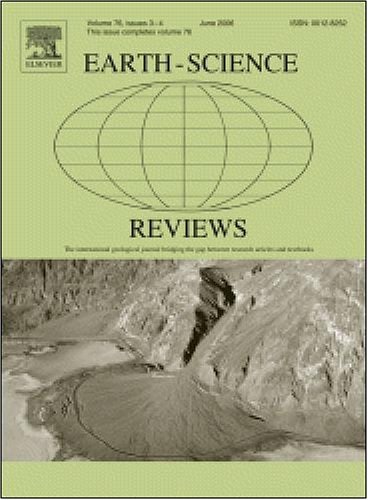Episodic tectonism, metamorphism, magmatism, mineralization and mass mortality in eastern China (and adjacent regions) during the Yanshanian movement: Consequences of major global plate reorganizations during the main episodes of Pangea breakup?
IF 10.8
1区 地球科学
Q1 GEOSCIENCES, MULTIDISCIPLINARY
引用次数: 0
Abstract
The cause of the Yanshanian movement in eastern China has been highly debated, since its initial proposal one hundred years ago. During the Yanshanian movement, transient, widespread intracontinental contractions (e.g., major regional stratigraphic unconformities, folding and thrusting) occurred at ca. 170 Ma, 140 Ma and 100 Ma. The contractions alternated with 20-30 Myr periods of intense continental extension, leading to the formation of numerous fossil fuel-bearing continental rift basins. Large-scale strike-slip and extensional faulting, development of metamorphic core complexes (MCCs)/extensional domes, magmatism, mineralization and metamorphism, rapid tectonic uplift/cooling and catastrophic mass mortalities took place. The Yanshanian events flared up episodically, mainly during 195-180 Ma, 172-155 Ma, 135-120 Ma and 105-80 Ma. Similar episodes of tectonothermal activities occurred in the circum-Pangean belts (East Asia, Neotethys, Cordilleras and East Gondwana), in both subduction zones (e.g., SSZ ophiolites, metamorphic soles and paired metamorphic belts) and intracontinental settings. The tectonothermal flare-ups coincided with the four stages of Pangea breakup: (1) initial Pangea breakup in the Central Atlantic and westernmost Tethys (192-184 Ma), (2) separation of West and East Gondwana (170-160 Ma) and initial opening of the Piemont-Ligurian Tethys (175-164 Ma), (3) initial breakups of East Gondwana, West Gondwana and Laurasia (135-125 Ma) and (4) the final breakup of Gondwana (104-84 Ma). We suggest that the late Mesozoic circum-Pangean events, including the Yanshanian movement, were caused by interplate interactions in accommodating major, abrupt global plate reorganizations during the main episodes of internal supercontinent breakup.

求助全文
约1分钟内获得全文
求助全文
来源期刊

Earth-Science Reviews
地学-地球科学综合
CiteScore
21.70
自引率
5.80%
发文量
294
审稿时长
15.1 weeks
期刊介绍:
Covering a much wider field than the usual specialist journals, Earth Science Reviews publishes review articles dealing with all aspects of Earth Sciences, and is an important vehicle for allowing readers to see their particular interest related to the Earth Sciences as a whole.
 求助内容:
求助内容: 应助结果提醒方式:
应助结果提醒方式:


